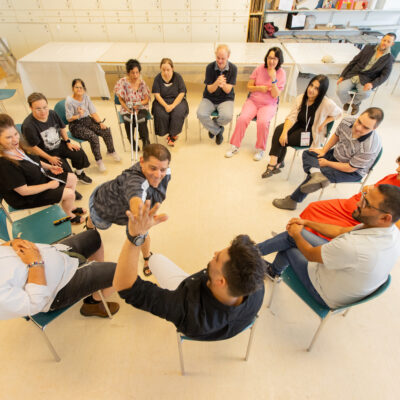How Parents Teach Children About Charitable Giving Matters, According to New Study
 Parents who talk to their children about charitable giving significantly increase the likelihood that those children will give to charity, according to Women Give 2013, a new study from the Women’s Philanthropy Institute at the Indiana University Lilly Family School of Philanthropy.
Parents who talk to their children about charitable giving significantly increase the likelihood that those children will give to charity, according to Women Give 2013, a new study from the Women’s Philanthropy Institute at the Indiana University Lilly Family School of Philanthropy.
That finding holds true regardless of the child’s sex, age, race and family income. Children whose parents talk to them about giving are 20 percent more likely to give to charity than children whose parents do not discuss giving with them.
“This research provides a clear, effective path for parents who want to encourage their children to be generous and caring,” said Debra J. Mesch, Ph.D., Director of the Women’s Philanthropy Institute. “The way parents teach their children about giving matters. Talking to children about charity is effective across all types of U.S. households, pointing the way to raising future philanthropists.”
The IU Lilly Family School of Philanthropy study is among the first to analyze and compare what parents can do to encourage their children’s charitable behavior. It examines two approaches through which parents teach children about charitable giving: (1) talking to children about charitable giving and (2) role-modeling charitable giving. For this study, role-modeling is defined as parents giving to charity. The study also investigates whether girls and boys participate differently in giving and volunteering, expanding the Women’s Philanthropy Institute’s exploration of how gender affects charitable giving. It follows the same 903 children over two time periods, 2002-2003 and 2007-2008.
Role-modeling alone does not appear to be as effective as talking to children about giving, the researchers found. Parents who want to raise charitable children should talk intentionally with them about their own philanthropic values and practices throughout childhood and adolescence in addition to role-modeling, they say.
Children are philanthropic, according to the study. Nearly nine out of 10 children, ages eight to 19, give to charity. The study also found that girls and boys are equally likely to make monetary gifts to charity; however, girls are more likely than boys to volunteer, a pattern that continues in adulthood.
“Understanding how children learn about charity has important implications for the future of giving in America. Studies like this benefit parents, teachers, nonprofit leaders and policy makers as they seek to engage the next generation in philanthropy,” said Una Osili, Ph.D., Director of Research at the IU Lilly Family School of Philanthropy, located on the Indiana University-Purdue University Indianapolis campus.
Women Give 2013 is the fourth in a series of research reports conducted at the Women’s Philanthropy Institute that focuses on gender differences in giving. Prior research has demonstrated that men and women exhibit different motivations for giving and different patterns of giving. Little is known about how girls and boys learn to become charitable adults. This new study uses data from the Panel Study of Income Dynamics and its Child Development Supplement, the nation’s largest nationally representative sample that tracks giving patterns among the same households over time. It builds on academic research conducted by Wilhelm, Estell, and Perdue (2012) which explores issues around raising charitable children.
The complete Women Give 2013 report is available at: www.philanthropy.iupui.edu/womengive.

 Add EJP on Google
Add EJP on Google









